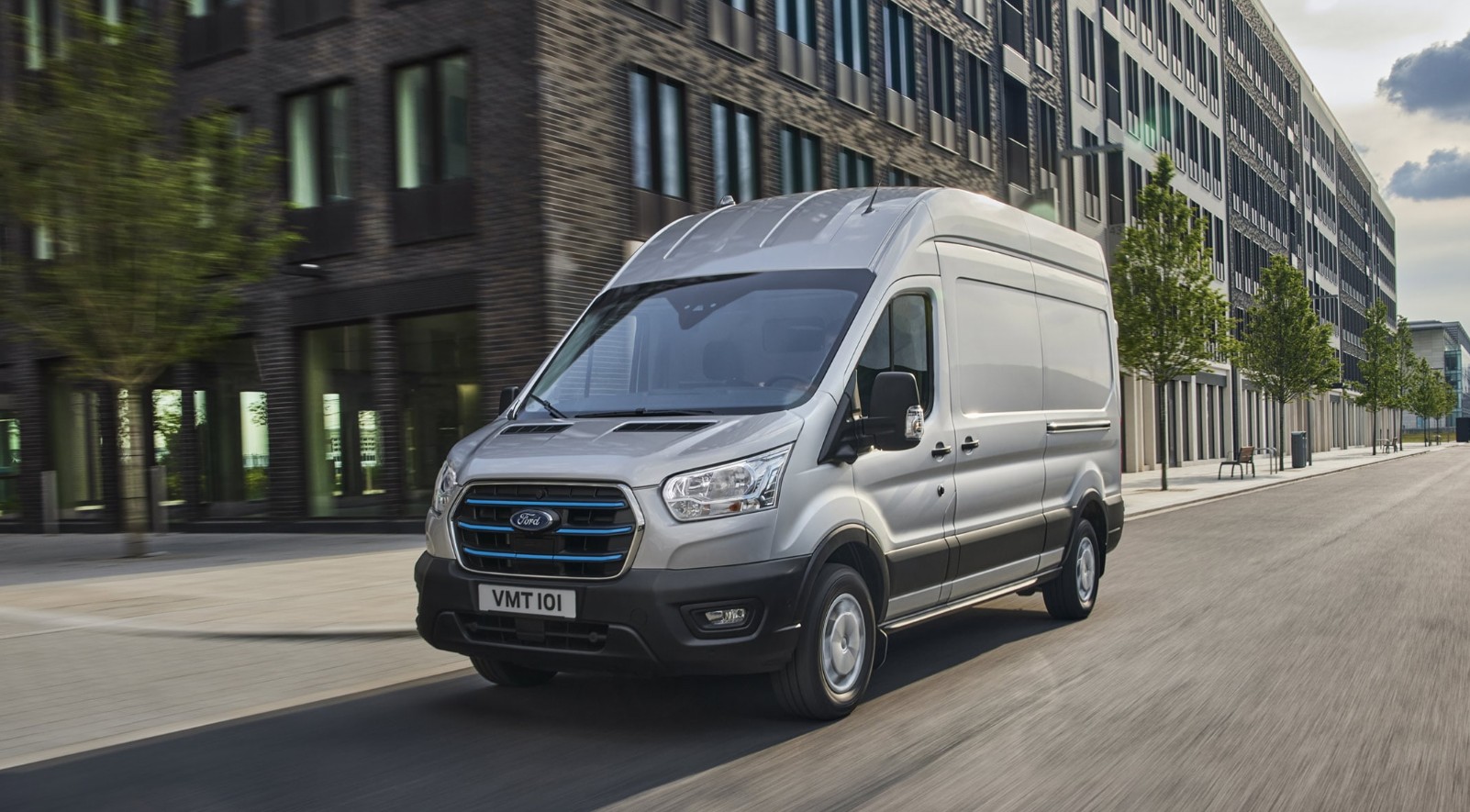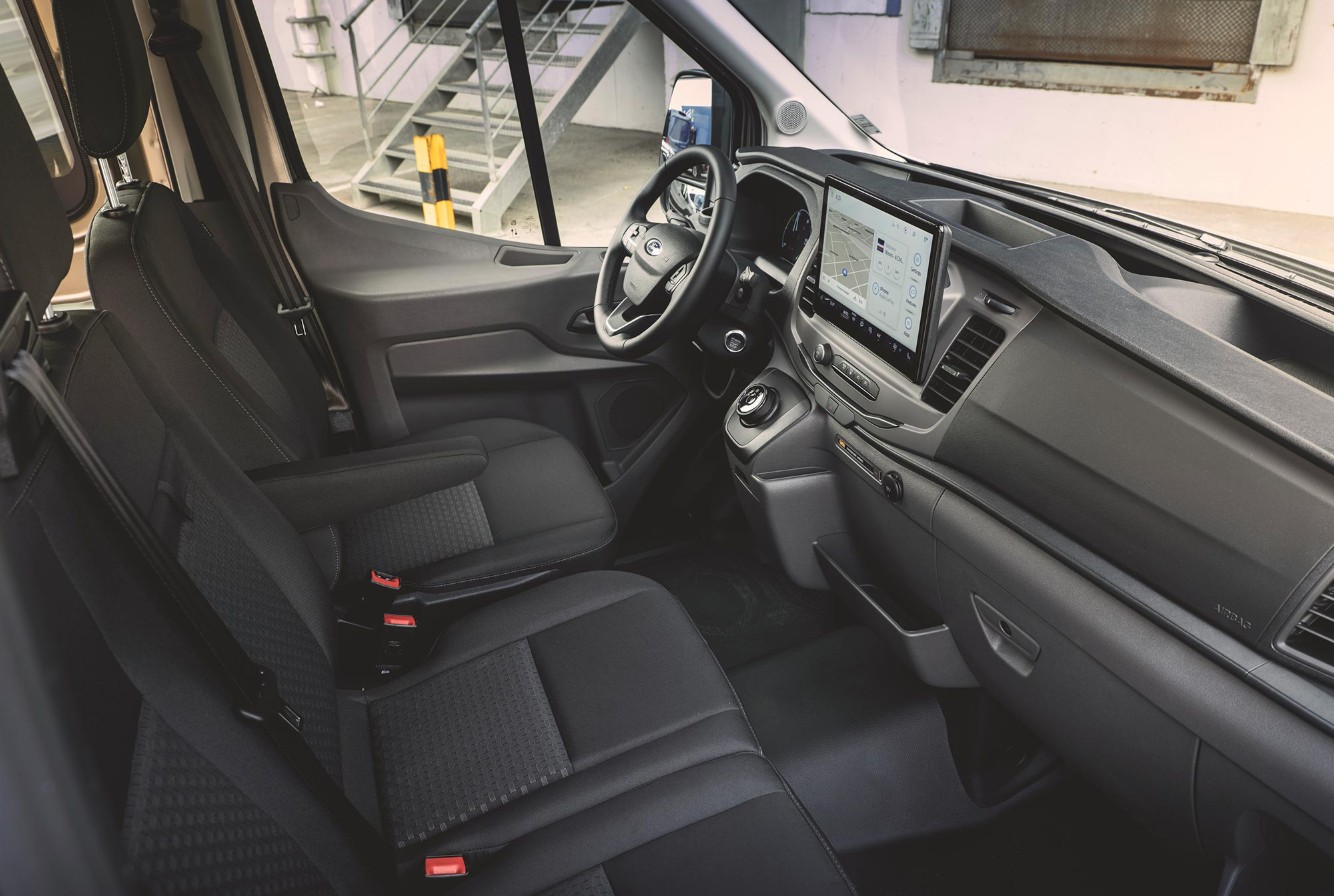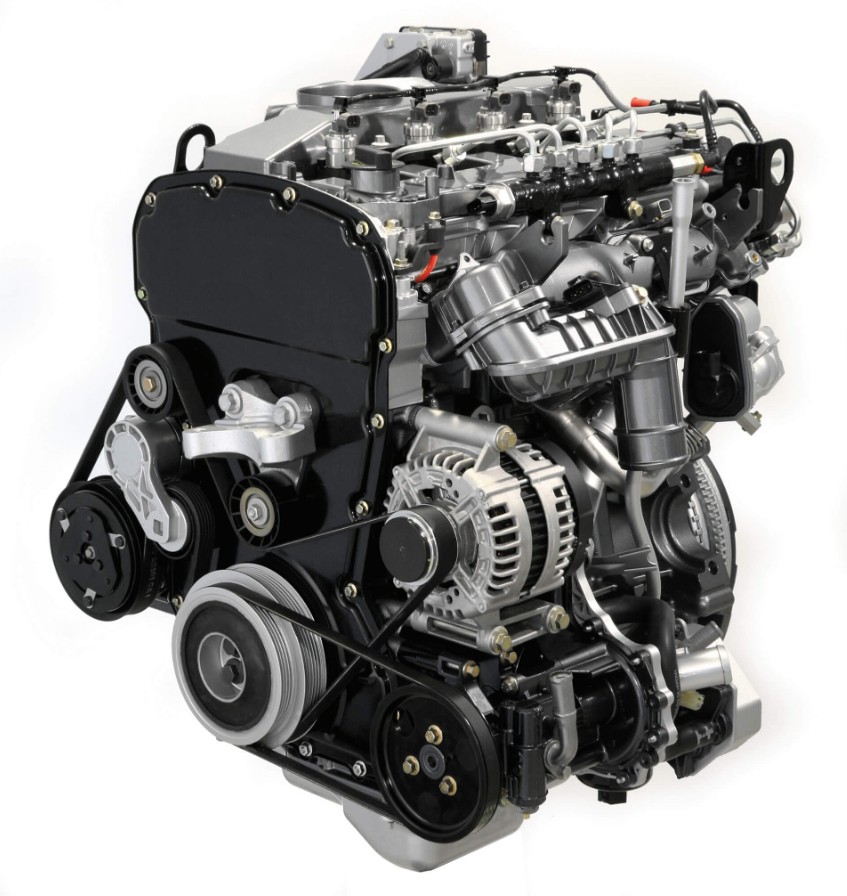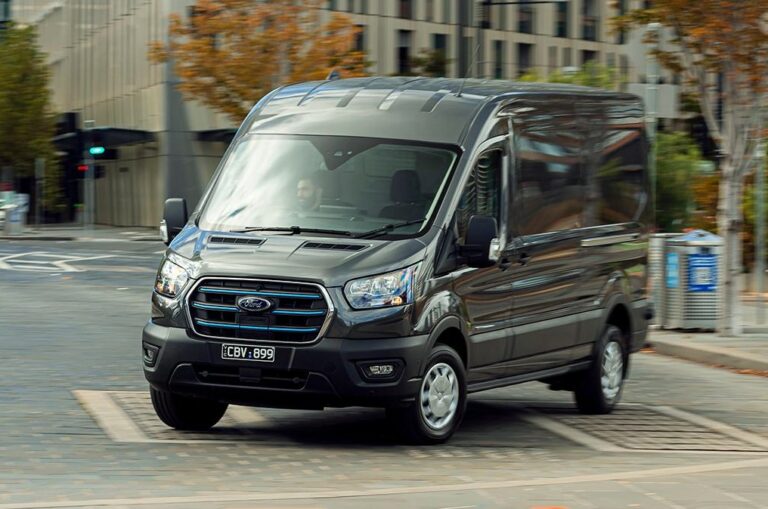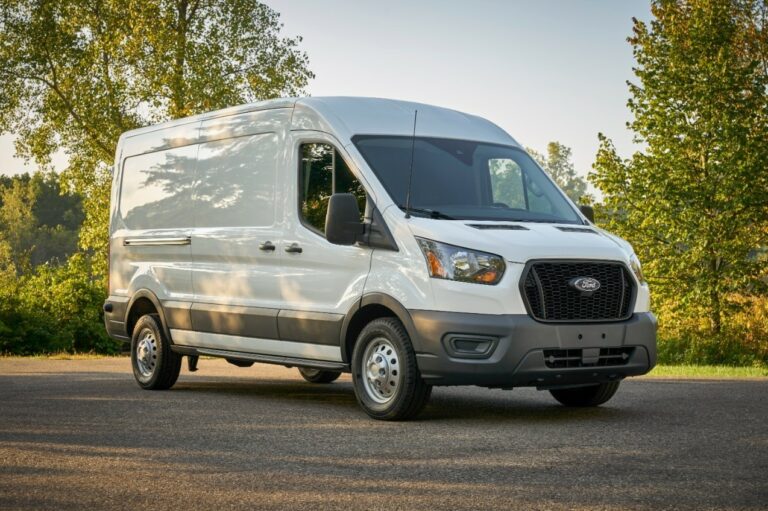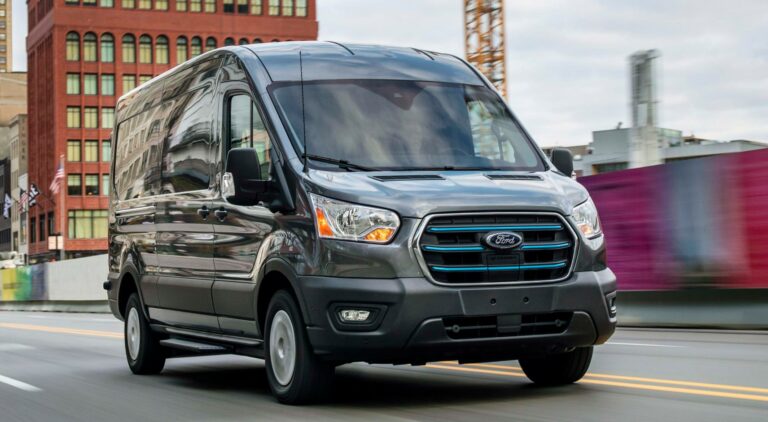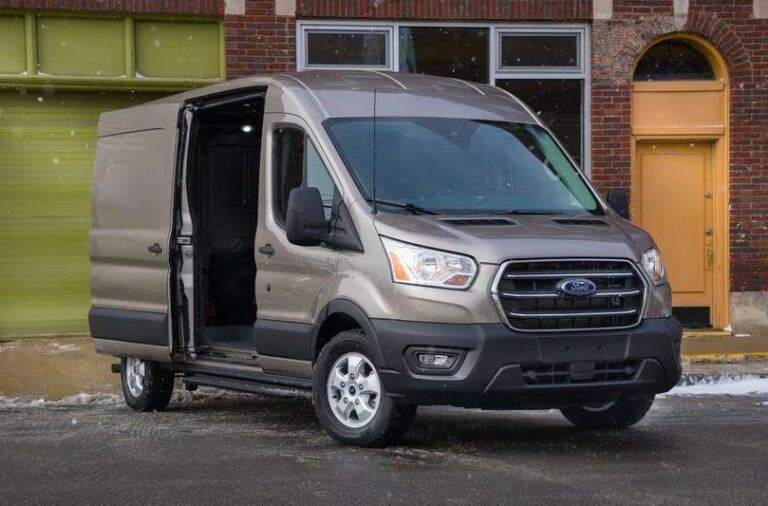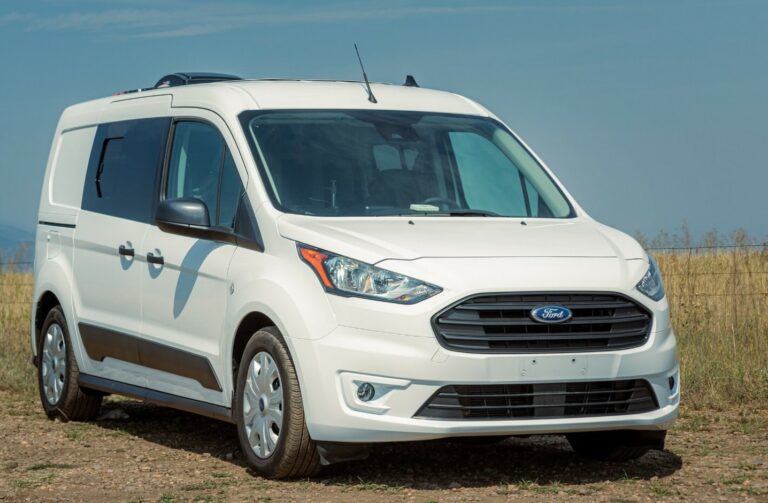2027 Ford E-Transit Release Date, Specs, Interior
2027 Ford E-Transit Release Date, Specs, Interior – The 2027 Ford E‑Transit steps into its second full model year after a comprehensive mid-cycle refresh focused on durability, utility, and usability.
Ford engineers strengthened the unibody platform, adding reinforcements at suspension mounts, torsion boxes, and seat belt anchor points for improved structural integrity under payload. The body panels were upgraded with more resilient composites and thicker steel gauge at high-wear points, reducing repair costs over time and boosting fleet longevity. 2027 Ford E-Transit Release Date
2027 Ford E-Transit Redesign and Update Plan
Exterior & Interior
The 2027 E‑Transit exterior focuses on usability. The sliding side door is now a dual-function design guiding up to a 45° open angle—ideal for loading in tight urban settings. Optional integrated ladder rack slots appear along the roof rails, and a higher load‑floor option is available for crews carrying taller payloads. Exterior paint resists chipping, and panel gaps were tightened to reduce water intrusion—critical when operating in wash-down or outdoor conditions.
Step inside the cabin and it’s still built for purpose with an unexpected touch of comfort. New driver-focused layout includes thicker steering wheel padding, adjustable armrests, and improved seat ergonomics that support extended shifts. A total of six USB-C ports (four front, two rear) power handheld scanners, routers, or tablets. The center console receives more usable storage spaces, including a slide-out document tray and secure under-dash compartment. As standard, the E‑Transit splits its seats into 40/60 so fleets can fit long equipment behind the driver.
Despite its workhorse role, interior stylings are rugged yet refined. Soft-touch seat surfaces resist stains, and Laminated dash covers reduce glare. Step ladders and rack systems are still welcome; Ford now offers 18 factory-approved upfit accessories that attach without drilling—ranging from drawer systems to mobile-service command centers. Illumination has quadrupled via optional overhead LED lights in the cargo zone, and cabin speakers include noise-canceling tech to reduce highway drone. The result: a work van made for the real world, with enhancements that make daily work easier.
A redesigned front end builds on Ford’s latest electric design language—closed-off grille for reduced drag, refreshed LED headlamps, and an integrated frunk lid offering lockable, weather‑sealed cargo storage. Lower bumper intakes house active shutters tied to the thermal management system. Rear styling was also tweaked: the tailgate now carries integrated dampers for smoother operation, and a new recessed LED lighting cluster wraps around the corners for heightened visibility.
Inside, the dashboard sees a smarter redesign. Ford introduced a capacitive touchscreen with faster response, expanded vehicle data displays, and a Drive Modes selector wheel that can be disabled in fleet settings. Air vents are now modular, allowing customization per upfit requirements. Updated materials include scuff‑resistant trim in loading zones and a fully washable floor surface with replaceable liners. Overall, the redesign retains what worked beautifully in first-gen E‑Transit while boosting real-world utility for users across industries. 2027 Ford E-Transit Release Date
2027 Ford E-Transit Specs
Engine & Performance
Ford sticks with the 68 kWh usable battery pack powering a 198 kW (266 hp) rear motor for 2027, but system improvements yield faster responses and better low-speed torque delivery. Overboost mode is sharper on remote starts and hill starts, helping heavily loaded vans launch effortlessly. New thermal management algorithms reduce high-temp de‑rate, maintaining peak power up to 240°F battery temps—ideal for heavy towing or delivery runs.
The real game-changer is the optional 115 kWh battery upgrade, exclusive to Medium Roof and Extended Cargo models. This larger battery houses more cells in an underfloor structure and offers approximately 235 miles of EPA range. With the standard 68 kWh, drivers can expect around 140 miles under mixed driving. Driving range still varies depending on load, cargo weight, and payload distribution.
Charging improvements continue to lead the segment. The E‑Transit features a 150 kW DC fast-charging capability that restores 10–80% in about 30 minutes on the larger battery. AC charging accepts up to 11 kW in Level 2 setups. Newly added is bi-directional charging: fleets can support job-site tools or emergency power using 9.6 kW of exportable energy. Over-the-air charger mapping and reservation systems integrate with telematics, enabling optimized charge scheduling and fleet-wide energy management. The E‑Transit is not just an EV van—it’s a mobile asset.
2027 Ford E-Transit Fuel Economy
Fuel economy for electric vans is simplified—range is king. The 68 kWh E‑Transit is rated at approximately 70 MPGe city and 74 highway. The upgraded 115 kWh version falls slightly to 221 MPGe equivalent city/hwy but offers far more usable range. Ford estimates cost per mile at 8–11 cents on commercial electricity rates—much cheaper than diesel or gasoline equivalents. 2027 Ford E-Transit Release Date
2027 Ford E-Transit Safety Features
Ford filled the 2027 E‑Transit with robust active safety features. Standard Driver Assist Package includes Ford Co-Pilot360 with Auto Emergency Braking, Blind Spot Info System, Rear Cross-Traffic Alert, and Lane-Keeping Aid. Notably, Adaptive Cruise Control now supports extended load-weight compensation and uses speed bump avoidance when paired with GPS data to prevent jerky stops while loaded.
Optional Driver Assist Plus includes Enhanced Active Park Assist (parallel and perpendicular), Lane-Centering Steering Assist, and a 360° Camera with trailer hitch view. Ford also updated the steering software to slow steering responses and braking aggressiveness when wheel torque is high, reducing operator fatigue. Brake-while-reverse system is upgraded with trailer sway detection.
Structurally, the E-Transit sports fatigue-tested chassis supports and a reinforced steering column for crash compliance. Door Latch Guard prevents cargo items from intruding into the cabin during impact. The center seat now incorporates a 4-way adjustable headrest and three-point belt, improving comfort and safety for occasional passengers. Fleet-focused safety analytics are accessible via Ford Telematics, giving real-time crash alerts and diagnostics for immediate follow-up.
2027 Ford E-Transit Release Date & Price
Pricing starts at $49,995 base MSRP for the 68 kWh cargo low-roof van. Medium Roof with same battery jumps to $53,995. The 115 kWh model begins at $59,995 for same body style. Options like towing package, tech suite, and rack systems may arrive in bundles: Bold Upfit Pack ($4,500), Driver Assist Plus ($2,400), and Toolkit Ready Package ($2,000).
Production begins June 2026 at Kansas City Assembly, with first fleet and dealer deliveries in August. Ford projects 18,000 units in 2027—double the initial rollout—to meet demand from fleets, utilities, and last-mile delivery businesses. Reservations are already open, with buyers qualifying for federal EV incentives and recent state rebates that make the E-Transit a cost-effective choice compared to legacy cargo vans.
